News
A Six-Point Plan By UNICEF To Protect Our Children
Global coordination is urgently needed to prevent the COVID-19 crisis from becoming a child-rights crisis.
Published
4 years agoon
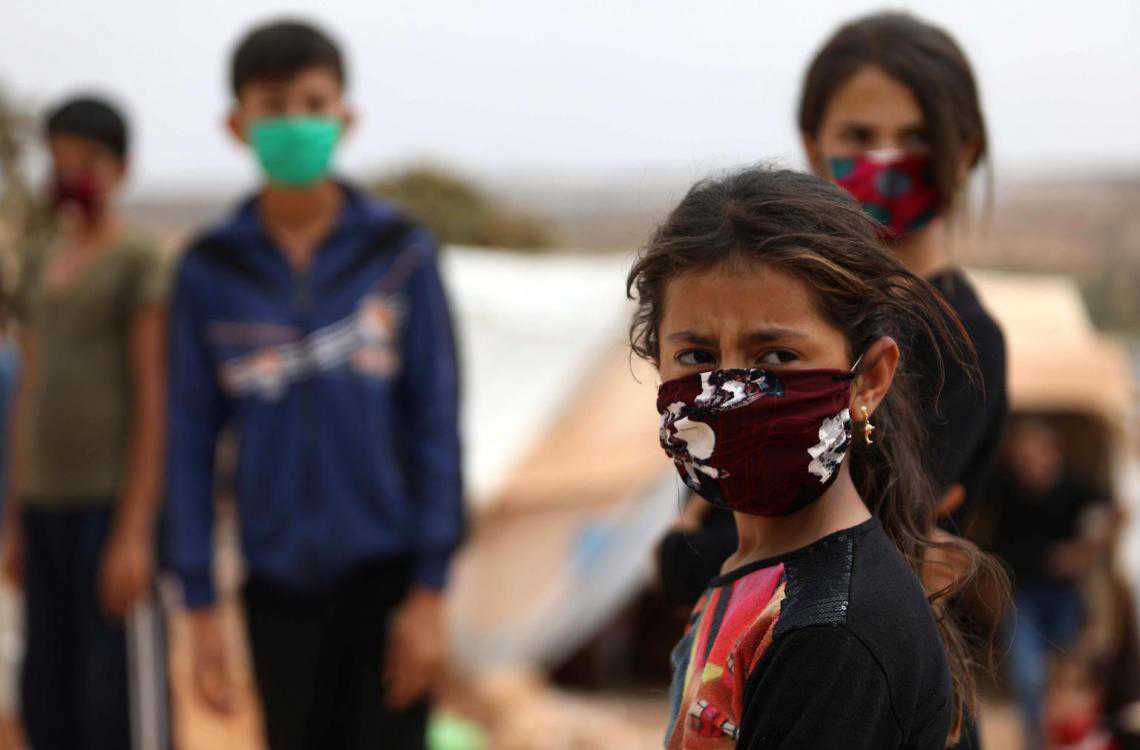
In the wake of the COVID-19 crisis, governments around the world have mobilized billions of dollars to save their economies. But there is another impending and devastating loss if we do not act: a lost generation of children.
Progress towards the Sustainable Development Goals is slipping backwards, and children continue to pay the steepest price. Without coordinated, global action to prevent, mitigate and respond to the effects of the pandemic, the consequences for children now, and for the future of our shared humanity, will be severe.
This six-point plan proposes a set of practical and concrete actions to reunite the world around a common cause: the realization of the Sustainable Development Goals and the Convention on the Rights of the Child.
To do so, decision-makers must start by listening to children and young people and including them in decision-making. It is they, especially girls; children facing poverty, exclusion, or violence; those with disabilities; children affected or displaced by a humanitarian crisis; and children without parental care, who will live with the impact of this pandemic for decades to come. UNICEF calls for global action to:
1. Ensure all children learn, including by closing the digital divide
At their peak, nationwide school closures disrupted the learning of 91 per cent of students worldwide. Marginalized children suffer the heaviest burden: some 463 million young people were not able to access remote learning during school shutdowns. What’s more, previous shutdowns demonstrate that children who are out of school for extended periods, especially girls, are less likely to return.
UNICEF asks governments and partners to:
-
Prioritize the reopening of schools: Take all measures possible to reopen schools safely and keep them open.
-
Increase education funding and ensure equal access to quality, violence-free education so every child learns. This will require a focus on the most marginalized children, including girls, children under attack and on the move, children with disabilities, and children living in rural communities or without access to the internet.
-
Close the digital divide by connecting all children and young people to the internet by 2030 and reaching 3.5 billion children and young people with safe, quality, accessible and equitable online learning.
-
Protect schools and places of learning from attack, and hold perpetrators of these attacks to account.
2. Guarantee access to health and nutrition services and make vaccines affordable and available to every child
A child survival crisis looms, with the children at greatest risk of hunger and disease now seeing their already-fragile health and food systems buckle under the strain of COVID-19. A fragmented and inequitable response to both treating and vaccinating against COVID-19 only risks prolonging the pandemic.
UNICEF asks governments and partners to:
-
Urgently ensure the continuity of key health and nutrition services for children and young people – especially routine immunization, prioritizing the hardest to reach.
-
Unite to fight the spread of misinformation and build back confidence in routine immunization.
-
Collect gender-, age- and disability-disaggregated data on children and young people, including for those who have contracted COVID-19, and invest in research to better understand its impact on their health and well-being.
-
Ensure every child and young person has equal and affordable access – regardless of where they live – to COVID-19 diagnostics, therapeutics and vaccines as part of a comprehensive package of essential care.
-
Ensure any new funding expands access to other essential health services for children and young people, including by training and supporting health-care workers.

3. Support and protect the mental health of children and young people and bring an end to abuse, gender-based violence, and neglect in childhood
The world is waking up to the extent – and lasting impacts – of child abuse and neglect. But the COVID-19 crisis has only exacerbated violence, exploitation, and abuse as children are cut off from key support services while simultaneously suffering the additional stress placed on families in turmoil. Girls are particularly vulnerable, with child marriage and adolescent pregnancy already on the rise.
UNICEF asks governments and partners to:
-
Integrate sustainable child mental health and psychosocial support funding in all global humanitarian responses and commit to increased multi-year funding to better meet the protection needs of children in crisis.
-
Prioritize the prevention of and response to gender-based violence in global humanitarian action, increasing funding for gender-specific interventions.
-
Invest in gender-sensitive mental health and psychosocial support for children, young people and their caregivers:
-
Provide parenting support to all those who need it and strengthen child helplines and other child-focused reporting mechanisms.
-
Designate formal and informal social service workers and services – including for gender-based violence, child protection, and sexual and reproductive health services – as essential.
-
Invest in gender-sensitive mental health and psychosocial support services for children, adolescents and their caregivers, including through schools, social services and communities.
-
4. Increase access to clean water, sanitation and hygiene and address environmental degradation and climate change
COVID-19 may not have been directly caused by climate change, but there are strong linkages pointing to environmental degradation as a common underlying risk factor. Unreliable access to safe water due to changes in climate also limits people’s ability to practise life-saving hygiene measures like handwashing. Our vulnerability to this pandemic has only underscored the risk of not taking immediate action to protect against environmental degradation and climate change.
UNICEF asks governments and partners to:
-
Guarantee universal access to clean water and handwashing for children and families through national policies, private sector cooperation, community engagement and behaviour-change initiatives.
-
Invest in climate-resilient water, sanitation and hygiene (WASH) services in homes, schools, hospitals and public spaces to make communities better prepared for future pandemics and other shocks.
-
Integrate child rights into key national climate change and adaptation strategies, policies and planning documents, including the Nationally Determined Contributions (NDCs) and National Adaptation Plans (NAPs), as well as COVID-19 response and recovery plans and budgets.
-
Continue to pursue, implement and monitor climate and environmentally focused targets outlined in the Sustainable Development Goals and the Paris Agreement.
-
Teach children and young people about climate change, the environment and responsible and sustainable consumption and production.
5. Reverse the rise in child poverty and ensure an inclusive recovery for all
The economic crisis caused by COVID-19 threatens to hit children the hardest, with the number of children living below their national poverty lines expected to soar by 140 million by the end of the year. Economic crises are often followed by cuts to government spending, including on programmes for children. If the world repeats this pattern in the wake of COVID-19, poverty and deprivation among children will continue to rise, even after the immediate crisis has waned. An inclusive recovery plan is imperative to prevent countless more children from reaching levels of poverty unseen for many years.
UNICEF asks governments to:
Marshal global resources to ensure an inclusive, gender-sensitive recovery, and support national fiscal responses that prioritize children and their families:
- Maintain or increase overseas aid commitments, identifying context-specific new financing options and direct funding to those countries most affected and least able to take on new lending.
- Act on debt relief, including extending current debt service suspension to middle-income countries. Ensure coordinated action covering all creditors to restructure and, where necessary, reduce debt.
- Include investment in key services for children and young people as part of domestic stimulus packages and ring-fence existing spending on the most vulnerable children.
Expand resilient social protection programmes for the most vulnerable children and their families, including cash transfers for every child and child-friendly services like affordable, quality childcare.
6. Redouble efforts to protect and support children and their families living through conflict, disaster and displacement
Even before the pandemic, 2020 was set to see more people than ever in need of humanitarian assistance. COVID-19 has compounded the vulnerabilities of migrant, displaced, and refugee children, as well as those living in crisis-affected countries. And whether the result of active conflict or new pandemic restrictions, it is becoming harder to reach the most vulnerable children with essential and life-saving services. COVID-19 must not become an excuse to divert attention from these children.
UNICEF asks governments to:
-
Increase and maintain funding for emergencies to prevent multiple, catastrophic and protracted crises and to save children’s lives, alleviate their suffering and preserve their dignity. In all humanitarian responses, prioritize child rights and child protection, in line with the Core Commitments for Children.
-
Ensure immediate and unimpeded humanitarian access.
-
End attacks on children and on civilian infrastructure critical for their survival, such as water, sanitation, and health-care facilities and personnel. Hold the perpetrators of these attacks to account.
-
Include internally displaced, refugee and migrant children in national systems, policies and plans – starting with COVID-19 recovery and response efforts.
-
Fight the virus, not each other. Implement and uphold the United Nations Secretary-General’s call for a global ceasefire.
What is UNICEF doing to support children during COVID-19?
Our response to the coronavirus disease must reimagine a world fit for every child. History has shown that UNICEF, together with partners, has the experience and reach to improve the lives of millions of children and their families. We were there for the post-World War II refugee crisis – and have responded to every natural disaster, armed conflict, famine and disease since.
And we are here now, in 192 countries and territories, working with communities, governments and partners to slow the spread of COVID-19 and minimize the social and economic impacts on children and their families. We are:
-
Working with governments, authorities and global health partners to ensure vital supplies and protective equipment reach the most vulnerable communities.
-
Prioritizing the delivery of life-saving medicines, nutrition and vaccines, and working closely with governments and logistics networks to mitigate the impact of travel restrictions on the delivery of these supplies – including by supporting the COVAX initiative and preparing for a COVID-19 vaccine.
-
Working with partners to urgently distribute water, sanitation and hygiene facilities to the most vulnerable communities.
-
Ensuring the continuity of key health and nutrition services – including routine immunization – focusing on the most vulnerable children.
-
Distributing vital public health messaging and advice to slow the transmission of the virus and minimize mortality.
-
Supporting governments to prioritize schools in their reopening plans and take all possible measures to reopen safely.
-
Providing advice and support to parents, caregivers and educators to support home and remote learning, where schools remain closed, and working with partners to design innovative education solutions.
-
Working with partners to bridge the digital divide and bring internet connectivity to 3.5 billion children and young people by 2030.
-
Providing guidance to employers on how best to support working parents, and designing new social protection solutions that ensure the poorest households can access critical funding.
-
Providing peer-to-peer learning and information sharing between children, adolescents and young people to support their mental health and combat stigma, xenophobia and discrimination.
-
Working with governments, authorities and other partners to ensure child rights and child protection measures are embedded in the immediate COVID-19 response and longer-term recovery planning.
-
Stepping up the work with refugee and migrant children and those affected by conflict to ensure they are protected from COVID-19.
-
Supporting meaningful child participation in the development and implementation of programmes responding to COVID-19.
This article was first published on UNICEF.org
You may like
-


Remembering Kargil Vijay Diwas: A Lesson in History, Sacrifice, and Peace for Our Children
-
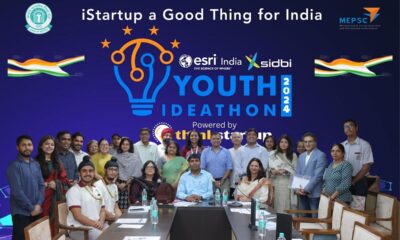

Youth Ideathon 2024: CBSE Launches India’s Biggest Entrepreneurship Competition for School Students
-
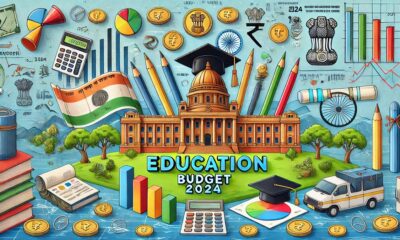

Internships in Top 500 Companies, Rs 5k Stipend for Youth: Key Highlights from the Education Budget 2024
-
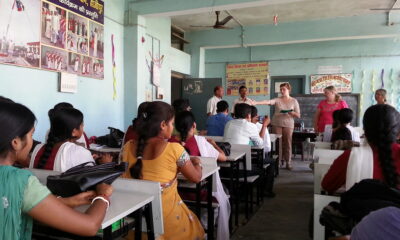

Higher Education Enrollment Jumps To Nearly 4.33 Crore In FY22, Up 26.5% From FY15
-
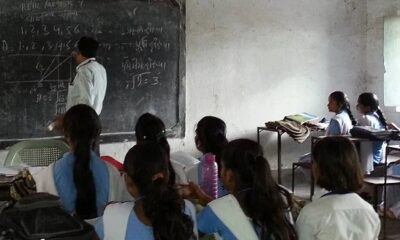

UNESCO Report Highlights Need for Boost in India’s Upper Secondary Education
-


Embracing Emojis in the Classroom: A Fun and Polite Approach to Modern Learning
-
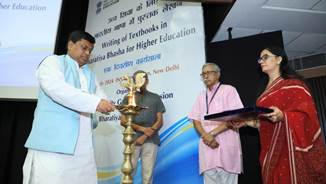

Workshop on Writing Textbooks in Bharatiya Bhasha for Higher Education Inaugurated by Dr. Sukanta Majumdar
-


Nurturing Natural Skills: Empowering Youth for the Future
-
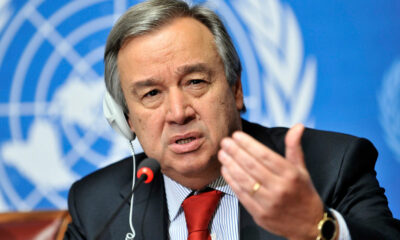

Global Education Crisis Demands Immediate Action, Says UN Secretary-General
-


Celebrating Nikola Tesla: A Beacon for Transforming Education
Education
Youth Ideathon 2024: CBSE Launches India’s Biggest Entrepreneurship Competition for School Students
Published
2 days agoon
July 25, 2024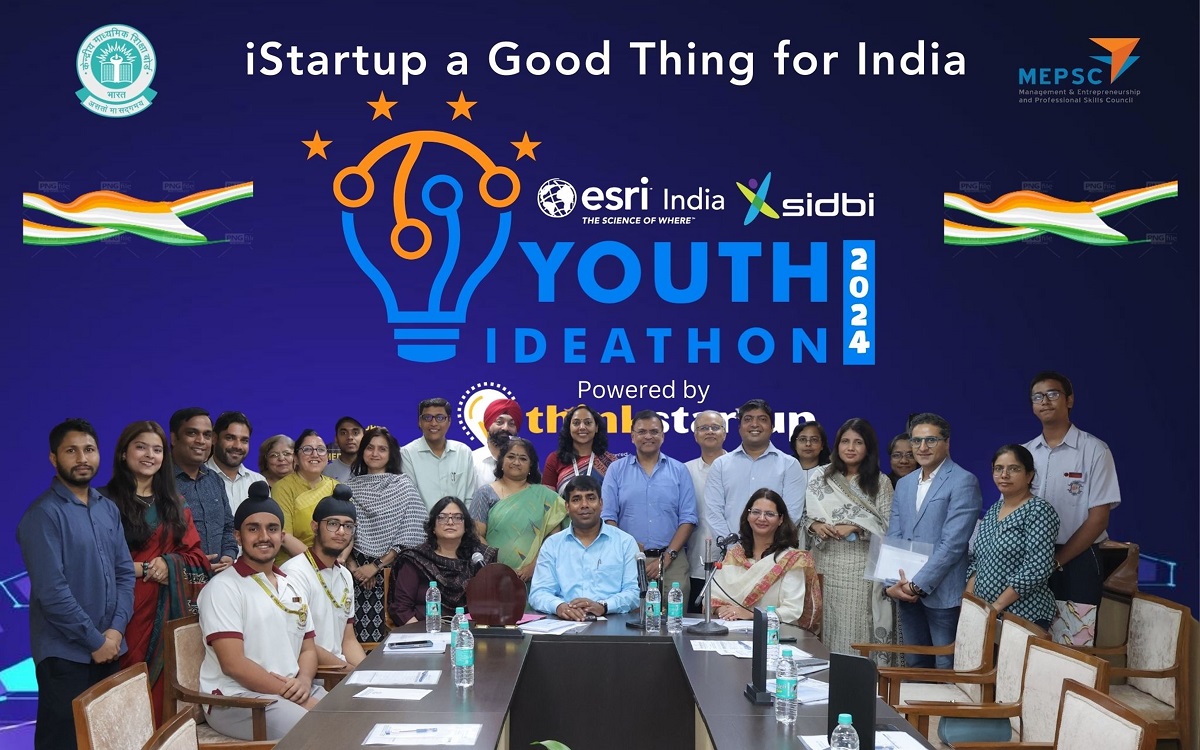
ThinkStartup, India’s leading entrepreneurship education platform, in association with the Management Entrepreneurship Professional Skills Council (MEPSC) under the Ministry of Skill Development and Entrepreneurship, and the Central Board for Secondary Education (CBSE), announced the launch of the 4th edition of Youth Ideathon (YI24). This prestigious Innovation and Entrepreneurship festival aims to harness the creativity and entrepreneurial spirit of young minds across India.
The theme for this year’s Youth Ideathon is “iStartup a Good Thing for India.” The competition will be held in five stages, initially online, and is open to all school students in India, divided into Junior (Class 4 to Class 8) and Senior (Class 9 to Class 12) categories. Students will compete in teams of 3 to 5 members from the same school. The grand finale is set for October 6, 2024. Last year, the Ideathon attracted over 1.5 lakh students from more than 8,000 schools, and this year aims to see participation from over 2 lakh students across 10,000 schools.
Dr Biswajit Saha, Director (Skill Education & Training), CBSE, remarked, “Entrepreneurship is an essential pillar of the New Education Policy 2020, and the Youth Ideathon platform allows students to think bravely and showcase their talents.”
Mamta Kumari, Deputy General Manager, SIDBI, added, “Initiatives like Youth Ideathon 2024 nurture the entrepreneurial spirit among young minds, creating over 200 internships for school students in fields such as technology and digital marketing.”
Shivani Singh-Kapoor, Co-founder of ThinkStartup, emphasised the importance of nurturing young talent, stating, “Youth Ideathon empowers the next generation by nurturing high-potential student ideas with incubation support.”
The competition is supported by industry leaders such as Esri India and MediaTek. Agendra Kumar, Managing Director of Esri India, noted, “Youth Ideathon channels the creativity of young minds towards addressing pressing social, environmental, and economic challenges.”
Anku Jain, Managing Director of MediaTek India, echoed this sentiment, saying, “By supporting platforms like Youth Ideathon, we aim to generate more startups, create jobs, and cultivate groundbreaking ideas.”
Sanjeeva Shivesh, Program Director of Youth Ideathon, highlighted the new frugal startup challenge, offering Rs. 1000 cash to the top 500 teams to build a prototype or small venture.
Youth Ideathon 2024 also receives support from SheAtWork and BRICS CCI WE. Ruby Sinha, Founder of SheAtWork, stated, “Youth Ideathon addresses both SDG 4 and SDG 5 goals of quality education and gender equality.”
Participants will receive certificates, with top teams competing for incubation grants up to Rs. 100,000. Special recognition will be given to teachers, mentors, and schools with high participation rates.
Education
Internships in Top 500 Companies, Rs 5k Stipend for Youth: Key Highlights from the Education Budget 2024
Published
3 days agoon
July 24, 2024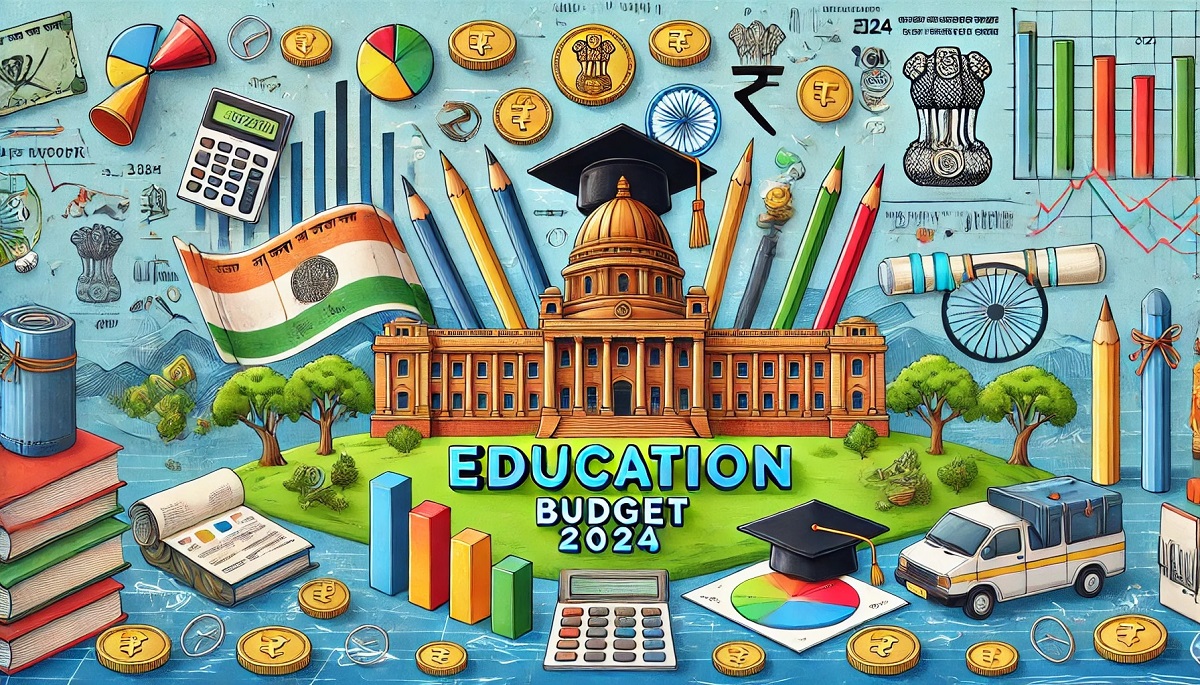
Finance Minister Nirmala Sitharaman presented the Budget 2024 yesterday, marking the first budget of the BJP-led NDA after Prime Minister Narendra Modi began his third term. The budget introduced significant allocations aimed at bolstering education, employment, and skilling, with a notable allocation of Rs 1.48 lakh crore for these sectors.
Education Budget 2024: Rs 1.48 Lakh Crore Allocated
A new scheme offering internship opportunities at 500 top companies for 1 crore students over the next five years was one of the major highlights. Each student will receive a monthly stipend of Rs 5,000 and a one-time assistance payment of Rs 6,000. This initiative is designed to bridge the gap between academia and industry, providing practical experience to young learners.
“The government’s initiative to provide financial support for higher education loans up to Rs 10 lakh is commendable. This move will enhance accessibility to quality education,” said Dilip Gangaramani, Founder Director & CEO of Target Publications Pvt. Ltd. “The allocation of Rs 2 lakh crore for employment and skilling initiatives is also a positive step towards addressing youth unemployment.”
Major Employment and Skilling Schemes
The Finance Minister announced a substantial PM Package consisting of five programmes aimed at boosting employment and skilling, with a total allocation of Rs 2 lakh crore. Among these, Rs 1.48 lakh crore has been specifically allocated for education, employment, and skilling. The initiatives will skill 20 lakh youth over a five-year period, significantly contributing to the nation’s workforce by equipping young individuals with necessary skills to thrive in various industries.
25,000 Students to Avail Loan Benefits Every Year
The budget also introduced model skill loans. “Skilling loans – model skill loans schemes for up to 7 lakh rupees will benefit 25,000 students every year,” stated Finance Minister Sitharaman. This initiative aims to support students financially in acquiring necessary skills, thus enhancing their employability and career prospects.
“This year’s budget strikes a fine balance between fiscal discipline and drivers of economic and social growth. Enhanced initiatives on women empowerment and education underscore the focus on welfare schemes,” noted Dr Rakesh K Singh, Professor and Associate Dean – Academics at IMT Ghaziabad. “Structural reforms propose new policies to foster innovation and skill development in emerging areas such as AI and renewable energy.”
Comparison with Previous Budget
In the Union Budget 2023, the central government’s allocation for the education sector was Rs 1,12,898.97 crore, the highest allocation granted to the Ministry of Education at the time. The Union Budget 2024 reflects a strong focus on education, employment, and skilling, with significant investments aimed at creating a more skilled and educated workforce. The announced programmes and allocations are expected to drive improvements in educational infrastructure, job creation, and skill development across the nation.
“The government will also offer internships in 500 of India’s top companies. The companies can employ these interns through their CSR funds. As a support to employers, reimbursement of up to Rs 3,000 per month for two years towards their EPFO contribution for each additional employee will be provided,” stated Balkishan Sharma, Chairman & Founder at FVEG. “These new schemes aim to create new jobs and provide employment to well-educated youth.”
A Step Towards a Skilled Workforce
“The proposed comprehensive internship programme for one crore youth is a commendable initiative,” added Gangaramani. “These measures, if implemented effectively, can significantly boost India’s human capital development and contribute to a more skilled and employable workforce.”
The Budget 2024, with its focus on education, employment, and skilling, aligns with the nation’s developmental goals and is a welcome step forward in building a robust and future-ready workforce.
Education
Higher Education Enrollment Jumps To Nearly 4.33 Crore In FY22, Up 26.5% From FY15
Published
5 days agoon
July 22, 2024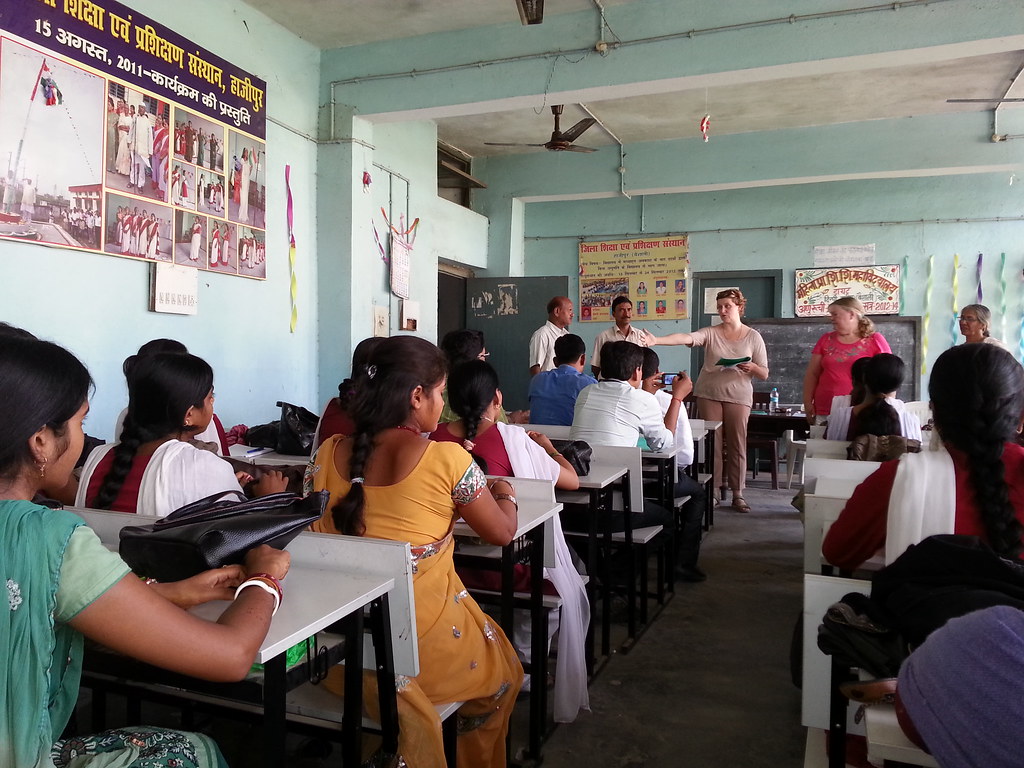
The higher education sector in India has seen a substantial increase in enrolment and rising equity over the past eight years, as revealed by the All India Survey on Higher Education (AISHE) 2021-22. The Economic Survey 2023-24, tabled in Parliament by Union Finance and Corporate Affairs Minister, Smt Nirmala Sitharaman, highlighted that total enrolment in higher education surged to nearly 4.33 crore in FY22, up from 4.14 crore in FY21 and 3.42 crore in FY15—a remarkable 26.5% increase since FY15.
This growth has been driven significantly by underprivileged sections, including SC, ST, and OBC communities, with a notable increase in female enrolment across these groups. Female enrolment in higher education jumped to 2.07 crore in FY22 from 1.57 crore in FY15, reflecting a 31.6% rise. This growing equity in higher education is expected to translate into better employment opportunities for previously disadvantaged sections of society.
India’s educational landscape is vast, with 26.52 crore students in schools, 4.33 crore in higher education, and over 11 crore learners in skilling institutions. The National Credit Framework (NCrF), announced under the National Education Policy 2020 in April 2023, serves as the foundation of a regulatory structure that promotes lifelong learning.
The Economic Survey underscores the importance of mission-mode and cost-effective implementation of educational programmes, especially at the primary level. Effective public spending on education should focus on pedagogy and governance, including monitoring teaching quality, recognising teacher performance, and employing local volunteers to ensure students are taught at the appropriate level.
India is making significant strides in research and development. The number of patents granted in FY24 nearly quadrupled from FY20, reaching almost 1,00,000. According to the World Intellectual Property Organization (WIPO), India had the highest growth in patent filings in 2022 at 31.6%. The country has improved its rank in the Global Innovation Index from 81st in 2015 to 40th in 2023.
Ph.D. enrolment has also surged, with an 81.2% increase from FY15 to FY22. Gross Expenditure on R&D (GERD) has more than doubled since FY11. The newly established National Research Foundation, ‘Anusandhan’, aims to bolster India’s R&D ecosystem with a significant financial commitment from the government.
India’s ascent in high-quality research is marked by its rise to 9th place in the Nature Index 2023, surpassing Australia and Switzerland. The government’s commitment to research and innovation is encapsulated in the interim budget of FY25, which includes a Rs. 1 lakh crore corpus for research, adopting the slogan “Jai Jawan, Jai Kisan, Jai Vigyan, Jai Anusandhan”.
Education
UNESCO Report Highlights Need for Boost in India’s Upper Secondary Education
Published
1 week agoon
July 18, 2024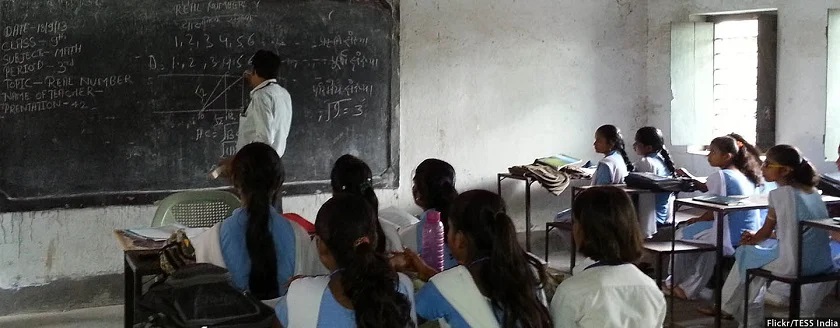
The recent UNESCO report, “SDG 4 Scorecard Progress Report on National Benchmarks: Focus on Teachers,” reveals that while India is excelling in primary education, the upper secondary education sector requires significant improvements. The report, published by UNESCO, shows that India’s primary education completion rate is at an impressive 94%, nearing its 2025 benchmark of 99%. However, the upper secondary completion rate lags at 51%, against the 2025 benchmark of 84%.
India’s performance in pre-primary participation is also notable, scoring 91%, close to its target of 95%. Conversely, the country struggles with out-of-school rates and lacks sufficient data to assess minimum learning proficiency accurately.
In terms of school internet connectivity, India is making average progress across all educational levels, indicating room for enhancement. The country performs well in the pre-primary teacher training sector, meeting its 2025 benchmark of 95%.
Overall, while India’s primary education sector is performing well, the secondary education sector, especially the upper secondary level, needs focused attention to meet the set benchmarks. The report highlights that 79% of countries have submitted national targets for SDG 4 indicators, with India making strides in some areas but still requiring significant efforts in others.
Education
Workshop on Writing Textbooks in Bharatiya Bhasha for Higher Education Inaugurated by Dr. Sukanta Majumdar
Published
1 week agoon
July 17, 2024
The Minister of State for Education, Dr. Sukanta Majumdar has inaugurated a workshop for Vice Chancellors on the writing of textbooks in Bharatiya Bhasha for higher education in New Delhi. Organised by the University Grants Commission (UGC) and Bharatiya Bhasha Samiti (BBS), the event saw the presence of eminent academicians, including Shri K. Sanjay Murthy, Prof. Chamu Krishna Shastry, and Prof. M. Jagadesh Kumar.
Dr. Majumdar emphasized the importance of developing study materials in Indian languages to reflect the country’s linguistic diversity and ensure accessible education. He highlighted the National Education Policy (NEP) 2020’s role in inspiring youth and expressed gratitude to Prime Minister Narendra Modi and Education Minister Dharmendra Pradhan for their visionary leadership.
Prof. Chamu Krishna Shastry and Prof. M. Jagadesh Kumar shared insights on developing a Bharatiya Bhasha Ecosystem. During the valedictory session, Shri K. Sanjay Murthy launched three projects: ASMITA, Bahubhasha Shabdkosh, and Real-time Translation Architecture. These initiatives aim to produce 22,000 books in 22 scheduled languages, create a grand repository of multilingual dictionaries, and enhance real-time translation capabilities.
Over 150 Vice Chancellors participated in the workshop, organized into 12 groups to plan and develop textbooks in 12 regional languages. The discussions focused on creating new textbooks, establishing standard vocabularies, and improving current textbooks with an emphasis on Indian Knowledge Systems (IKS). The event concluded with a Q&A session addressing queries from participants.
Education
Nurturing Natural Skills: Empowering Youth for the Future
Published
2 weeks agoon
July 16, 2024
On World Youth Skills Day celebrated on 15 July globally, it’s essential to recognize the incredible potential children inherently possess. Children are naturally curious, energetic, and less afraid of taking risks—qualities that, if nurtured correctly, can form the bedrock of their future success. By identifying and developing these skills, we can empower them to become resilient and adaptable adults ready to face the challenges of the future.
Curiosity: The Catalyst for Learning
Curiosity drives children to explore, ask questions, and seek out new experiences. This innate desire to understand the world around them is a powerful tool for learning. Encouraging curiosity through inquiry-based learning and fostering an environment where questions are welcomed can significantly enhance their educational experience. For instance, project-based learning allows children to dive deep into subjects that interest them, promoting critical thinking and problem-solving skills.
Energy: Channeling Enthusiasm into Productivity
Children are bursting with energy, which, when directed correctly, can lead to incredible productivity and creativity. Schools and parents can harness this energy by providing varied activities that challenge both mind and body. Extracurricular activities like sports, music, and arts not only keep them engaged but also teach them discipline, teamwork, and perseverance. Moreover, incorporating movement into learning, such as through kinesthetic activities, can help maintain their focus and enhance memory retention.
Fearlessness: Embracing Risks and Learning from Failure
Children’s fearlessness and willingness to take risks are qualities that can drive innovation. Creating a safe environment where they can experiment, fail, and learn from their mistakes is crucial. By teaching resilience and the value of perseverance, we can help them develop a growth mindset. Activities that encourage trial and error, such as coding, robotics, and creative writing, can instill confidence and the ability to view failures as opportunities for growth.
Developing These Skills into Strengths
To turn these innate skills into lasting strengths, it is essential to provide continuous support and opportunities for development. Teachers and parents play a pivotal role in this process by:
- Providing Diverse Learning Experiences: Exposure to various subjects and activities helps children discover their interests and strengths. This broadens their horizons and fosters a love for lifelong learning.
- Encouraging Collaborative Learning: Group projects and team activities teach children the importance of collaboration, communication, and empathy. These skills are invaluable in both personal and professional settings.
- Promoting Self-Reflection: Encouraging children to reflect on their experiences helps them understand their strengths and areas for improvement. This practice can build self-awareness and intrinsic motivation.
- Integrating Technology: Leveraging technology in education can make learning more engaging and accessible. Interactive tools and resources can cater to different learning styles and keep children excited about their educational journey.
By recognizing and nurturing the natural skills of curiosity, energy, and fearlessness in children, we can transform these qualities into powerful strengths. This approach not only prepares them for future challenges but also equips them with the resilience and adaptability needed in a rapidly changing world. On World Youth Skills Day, let’s commit to fostering these attributes, ensuring that the youth of today become the innovative leaders of tomorrow.
News
Global Education Crisis Demands Immediate Action, Says UN Secretary-General
Published
2 weeks agoon
July 12, 2024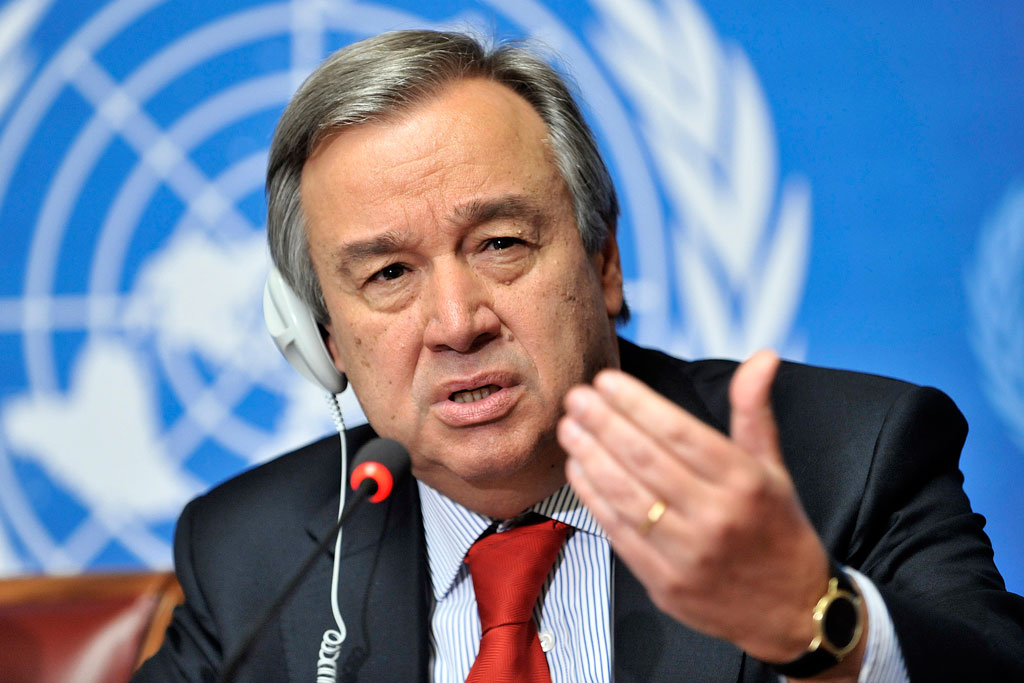
On 11 July 2024, during a Special Event on Transforming Education at the High Level Political Forum (HLPF), UN Secretary-General António Guterres highlighted the urgent need for a “dramatic shift” in global education. This call to action aims to create a more peaceful, sustainable, and just world through genuine learning environments from childhood to adulthood.
The event serves as a precursor to the upcoming Summit of the Future in September. Guterres emphasized that the current state of global education is inadequate, with 84 million children projected to be out of school by 2030 unless significant changes are made. This situation jeopardizes the achievement of Sustainable Development Goal 4 (SDG4), which seeks to ensure inclusive and equitable quality education for all.
Currently, only one-sixth of countries are on track to meet the SDG4 target of universal access to quality education. Guterres pointed out several critical issues, such as slow secondary level completion rates, insufficient skill development for a changing world, and the optional status of early childhood and adult learning. He highlighted the alarming statistic that 70% of children in sub-Saharan Africa cannot read a basic text by age 10.
Financial constraints further exacerbate the crisis. UNESCO estimated that developing nations need to invest $100 billion annually to achieve SDG4, with an additional 50% required for digital education transformation. Guterres noted that many countries spend more on debt servicing than on education or health.
Despite commitments from over 140 countries at the Transforming Education Summit in 2022, progress remains slow and uneven. Guterres proposed a four-point plan to address the crisis, focusing on closing financing and access gaps, supporting teachers, and revolutionizing education systems. He stressed that education is essential for sustainable development, peace, and human rights.
President of the General Assembly, Dennis Francis, echoed Guterres’ sentiments, emphasizing the need for inclusive, equitable, and lifelong learning opportunities. He highlighted the dire state of education in South Sudan, the denial of girls’ education in Afghanistan, and the impact of conflict on education in Ukraine and Gaza.
UN Deputy Secretary-General Amina Mohammed reinforced the message that education is crucial for achieving common goals in sustainable development. She urged global leaders to take decisive action to end the education crisis.
Guterres concluded by stating, “Education is the single-most important investment any country can make. In its people. And in its future. Let’s come together to end the global crisis in education.”
Education
Maharashtra Government Announces Free Higher Education for EWS, SEBC, OBC Girls
Published
3 weeks agoon
July 9, 2024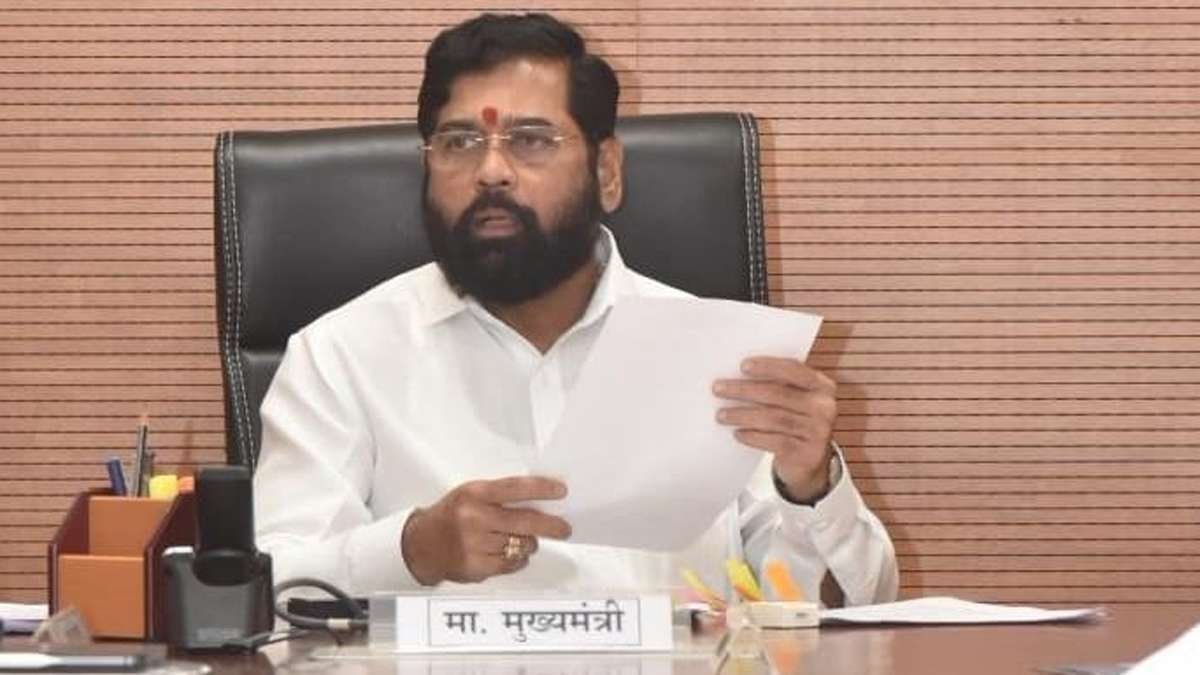
Ahead of the upcoming assembly elections in the state, the Maharashtra government has announced free higher education for girls from Economically Weaker Section (EWS), Socially and Economically Backward Classes (SEBC), and Other Backward Classes (OBC). The policy, which also waives tuition and examination fees for orphaned students regardless of gender, was formalised through a government resolution (GR) during a cabinet meeting chaired by Chief Minister Eknath Shinde. The initiative will commence from the academic year 2024-25 and is projected to cost Rs 906 crore.
The GR states that female students seeking admission to recognised vocational courses through the Centralised Admission Process in government colleges, aided private colleges, semi-aided private colleges, non-aided colleges, polytechnic, autonomous government universities, and open universities will benefit from this scheme. The courses covered include those run by the departments of higher and technical education, medicine, pharmacy, agriculture, animal husbandry, pisciculture, and dairy development. However, students from private autonomous universities, self-funded universities, or those enrolling through management and institutional quota will not be eligible for the scheme.
Female students whose annual family income is Rs 8 lakh or less and who belong to the EWS, SEBC, and OBC categories are eligible for the fee waiver. Both new admissions and current students pursuing their degrees can avail of this facility. This initiative is part of a broader women-focused policy by the Maharashtra government, aiming to enhance educational access and opportunities for underprivileged female students in the state.
(Source- PTI)
Education
Chhattisgarh Introduces Local Language Primary Education in Tribal Areas
Published
3 weeks agoon
July 8, 2024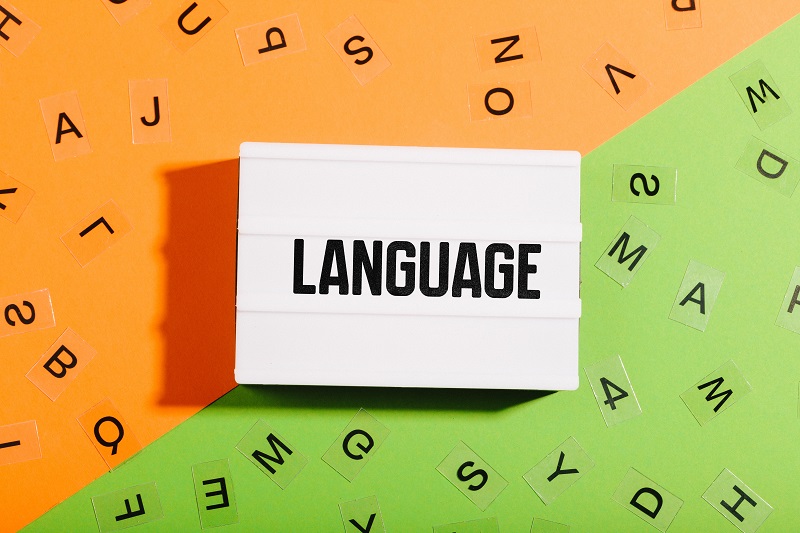
In line with the National Education Policy (NEP) 2020, the Chhattisgarh government has embarked on an initiative to provide primary education in local languages and dialects in remote tribal regions. Chief Minister Vishnu Deo Sai has directed the State Education Department to develop and distribute bilingual books in 18 local languages free of charge. This initiative aims to enhance the quality of educational resources and ensure that children receive education in their mother tongue or local language up to the fifth standard, as recommended by NEP 2020.
During the state-level ‘Shala Praveshotsav’ programme at Bagiya village in the tribal-dominated Jashpur district, Chief Minister Sai highlighted the importance of this initiative. He emphasised that providing education in local languages will not only improve educational outcomes but also help preserve local culture and traditions.
The ‘Shala Praveshotsav’ is an annual event aimed at encouraging school enrolment at the start of the academic session. This year, the event was moved from Raipur to Bagiya, the CM’s hometown, to underscore the significance of the new initiative.
An official from the Education Department mentioned that in tribal areas, primary school exams can now be taken in local languages and dialects. However, exams for higher classes will continue to be conducted in Hindi and English. This move is part of a broader effort to boost the literacy rate in Chhattisgarh, which currently stands at 70.28 percent, below the national average of 76 percent.
Education
NCERT Introduces ‘Poorvi’ For Class 6: A New English Textbook With Indian Focus
Published
3 weeks agoon
July 4, 2024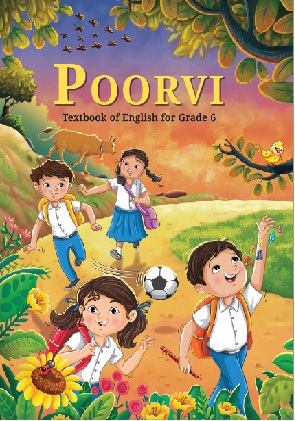
The National Council of Educational Research and Training (NCERT) has launched a new English textbook for class 6 titled “Poorvi”. Unlike its predecessor, “Honeysuckle”, which predominantly featured stories by non-Indian authors, “Poorvi” includes nine prose pieces by Indian authors and five poems by non-Indian authors, as reported by the Indian Express.
This new textbook aligns with the National Curriculum Framework 2023 and the National Education Policy 2020, incorporating revised chapters that reflect an Indian context. The previous textbook, “Honeysuckle,” contained eight poems (seven by non-Indian authors) and eight prose pieces (five by non-Indian authors), along with stories by Indian authors Munshi Premchand and Ruskin Bond.
Significantly, the term “Bharat” appears for the first time in an NCERT textbook, mentioned 19 times in a chapter titled “Culture and Tradition,” while “India” is mentioned seven times. This chapter also features a section called “Hamara Bharat, Incredible India!” emphasising India’s identity as “Bharat.”
Additionally, “Poorvi” includes chapters on the uses of spices beyond cooking and the benefits of yoga, highlighting aspects of Indian culture and tradition. NCERT had initially planned to release new textbooks for classes 3 and 6 earlier this year but encountered delays. The class 3 textbooks are now available.
Joseph Emmanuel, Director (Academics) at CBSE, advised schools to adopt these new syllabi and textbooks for classes 3 and 6 in place of the previous NCERT textbooks until the year 2023, as per a statement to PTI.
Newsletter

Remembering Kargil Vijay Diwas: A Lesson in History, Sacrifice, and Peace for Our Children

Youth Ideathon 2024: CBSE Launches India’s Biggest Entrepreneurship Competition for School Students

Internships in Top 500 Companies, Rs 5k Stipend for Youth: Key Highlights from the Education Budget 2024

Higher Education Enrollment Jumps To Nearly 4.33 Crore In FY22, Up 26.5% From FY15

UNESCO Report Highlights Need for Boost in India’s Upper Secondary Education

Embracing Emojis in the Classroom: A Fun and Polite Approach to Modern Learning

Workshop on Writing Textbooks in Bharatiya Bhasha for Higher Education Inaugurated by Dr. Sukanta Majumdar

Nurturing Natural Skills: Empowering Youth for the Future

Global Education Crisis Demands Immediate Action, Says UN Secretary-General

Celebrating Nikola Tesla: A Beacon for Transforming Education

Maharashtra Government Announces Free Higher Education for EWS, SEBC, OBC Girls

Chhattisgarh Introduces Local Language Primary Education in Tribal Areas

NCERT Introduces ‘Poorvi’ For Class 6: A New English Textbook With Indian Focus

National Teachers’ Award 2024: Self-Nominations Open Until 15th July

Australia’s Doubling of Student Visa Fees to Impact Indian Applicants

Navigating Teen Emotions: The Essential Lessons of ‘Inside Out’

Prerana Students Chart Career Paths with Target Publications’ Event

Kozhikode Becomes India’s First UNESCO ‘City of Literature’

Ladakh Celebrates Achieving Full Functional Literacy

Ministry of Education Launches Tobacco-Free Educational Institutions Campaign

A Story About Turning Math Anxiety into Achievement

Potato of my Classroom

The Liberal Gift: The Key Lessons from “College – Pathways of Possibilities” by Saikat Majumdar

NIIT Foundation and UNICEF YuWaah Empower 5,000 Women and Girls through Data Literacy Training Programme

Goa to Introduce Uniforms in Government Colleges

NCERT Introduces ‘Poorvi’ For Class 6: A New English Textbook With Indian Focus

India’s Eupheus Learning Recognised in TIME’s World’s Top EdTech Rising Stars of 2024

10 Summer Safety Tips for Kids During Summer Breaks

Why Sex Education in Schools is a Battlefield: A Look into Recent Debates and the Path Forward

OpenAI Launches ChatGPT Edu to Revolutionise University Education

Questioning the Trend of Lavish Farewells- #FarewellFiasco

UNESCO’s Happy Schools Initiative: Placing Happiness at the Heart of Education

Kerala Sets National Benchmark with AI Training Programme for 80,000 Teachers

NIIT Foundation and UNICEF YuWaah Empower 5,000 Women and Girls through Data Literacy Training Programme

Empowering Education: LASSI 2024 Concludes with Success and Inspiration

Addressing the Transition From Classrooms to Coaching: The Shifted Focus

One Size Doesn’t Fit All: The Need for Personalised Learning

Pricey Presents, Precocious Pressures: The Cost of Gift-Giving to Children

Heatwaves Disrupt School Education Across India

Beyond Appearances: Prachi Nigam’s Triumph and The Pressures of Appearance-Based Bullying in Schools

What It Takes to Be Well-Educated; Not Just Well-Read

Ivy Pressure Unveiled- The Need to Look Beyond the Ivy Gates

Vape Awareness: Mist of Misconception

The Liberal Gift: The Key Lessons from “College – Pathways of Possibilities” by Saikat Majumdar

University of Manchester To Offer Scholarships for Indian Students

Tripura Launches E-Attendance in Government Schools to Boost Accountability
CBSE Class 12 and Class 10 Results 2024: Girls Lead as Pass Rates Climb

Marked by Marks: The Stereotyping of Student Potential

Unsupervised Explorations: Rethinking Student Trips

Government of India Signs MoU for Digital Library Rashtriya e-Pustakalaya
SGEF2023 | Special Address by Rama Datt, Trustee, Maharaja Sawai Man Singh II Trust, Jaipur

ScooNews | After Movie | ScooNews Global Educators Fest 2023

Aftermovie | NIES2 UP Chapter | 21 Jan 2023

WEBINAR | Gamification in Education: How Digital Badges Can Boost Student Motivation and Engagement

ScooNews | WEBINAR| Importance of Physical Activity for Children at School | Plaeto

SCOONEWS | WEBINAR | WHY DIGITIZING YOUR SCHOOL IS A MUST | TEACHMINT

Keynote Address | Lakshyaraj Singh Mewar

Anurag Tripathi, Secretary, CBSE at SGEF2022

How schools can nurture every student’s genius

Aftermovie | SGEF2022 | Jaipur

Li Andersson | Minister of Education | Finland

Anurag Tripathi, Secretary, Central Board of Secondary Education (CBSE) discusses NEP2020

ScooNews | Early Ed Asia 2019 | Aftermovie
#PodarECEconf : Pursuing quality ECE

#CBSE Class XII #Results #Highlights

The interesting story of India’s educational system | Adhitya Iyer

A young scientist’s quest for clean water

The Danger of Silence: Clint Smith

National Digital Library of India is an initiative by HRD Ministry

Remembering Kalpana Chawla on her birthday!

Message from Sadhguru for Students!
Message from Sadhguru for Students!

The Untapped Genius That Could Change Science for the Better

Eddy Zhong: How school makes kids less intelligent TEDxYouth@Beacon

#TEDxCanberra : What if every child had access to music education…
Trending
-
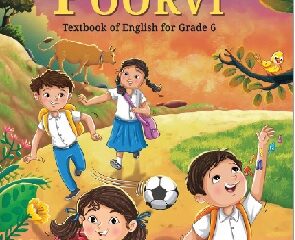
 Education3 weeks ago
Education3 weeks agoNCERT Introduces ‘Poorvi’ For Class 6: A New English Textbook With Indian Focus
-
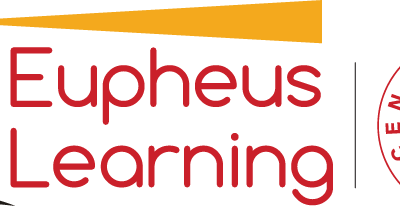
 Education3 months ago
Education3 months agoIndia’s Eupheus Learning Recognised in TIME’s World’s Top EdTech Rising Stars of 2024
-

 Education2 months ago
Education2 months ago10 Summer Safety Tips for Kids During Summer Breaks
-
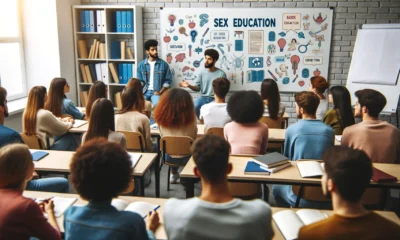
 Education2 months ago
Education2 months agoWhy Sex Education in Schools is a Battlefield: A Look into Recent Debates and the Path Forward
-

 Education2 months ago
Education2 months agoOpenAI Launches ChatGPT Edu to Revolutionise University Education
-

 Education3 months ago
Education3 months agoQuestioning the Trend of Lavish Farewells- #FarewellFiasco
-

 Education3 months ago
Education3 months agoUNESCO’s Happy Schools Initiative: Placing Happiness at the Heart of Education
-

 Education3 months ago
Education3 months agoKerala Sets National Benchmark with AI Training Programme for 80,000 Teachers
-
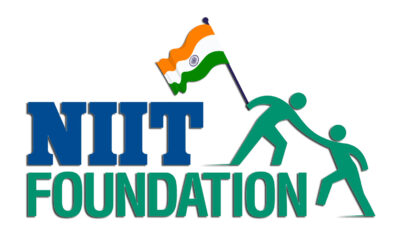
 Education1 month ago
Education1 month agoNIIT Foundation and UNICEF YuWaah Empower 5,000 Women and Girls through Data Literacy Training Programme
-
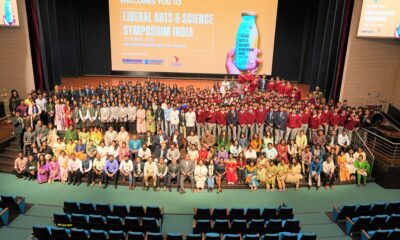
 Education3 months ago
Education3 months agoEmpowering Education: LASSI 2024 Concludes with Success and Inspiration



